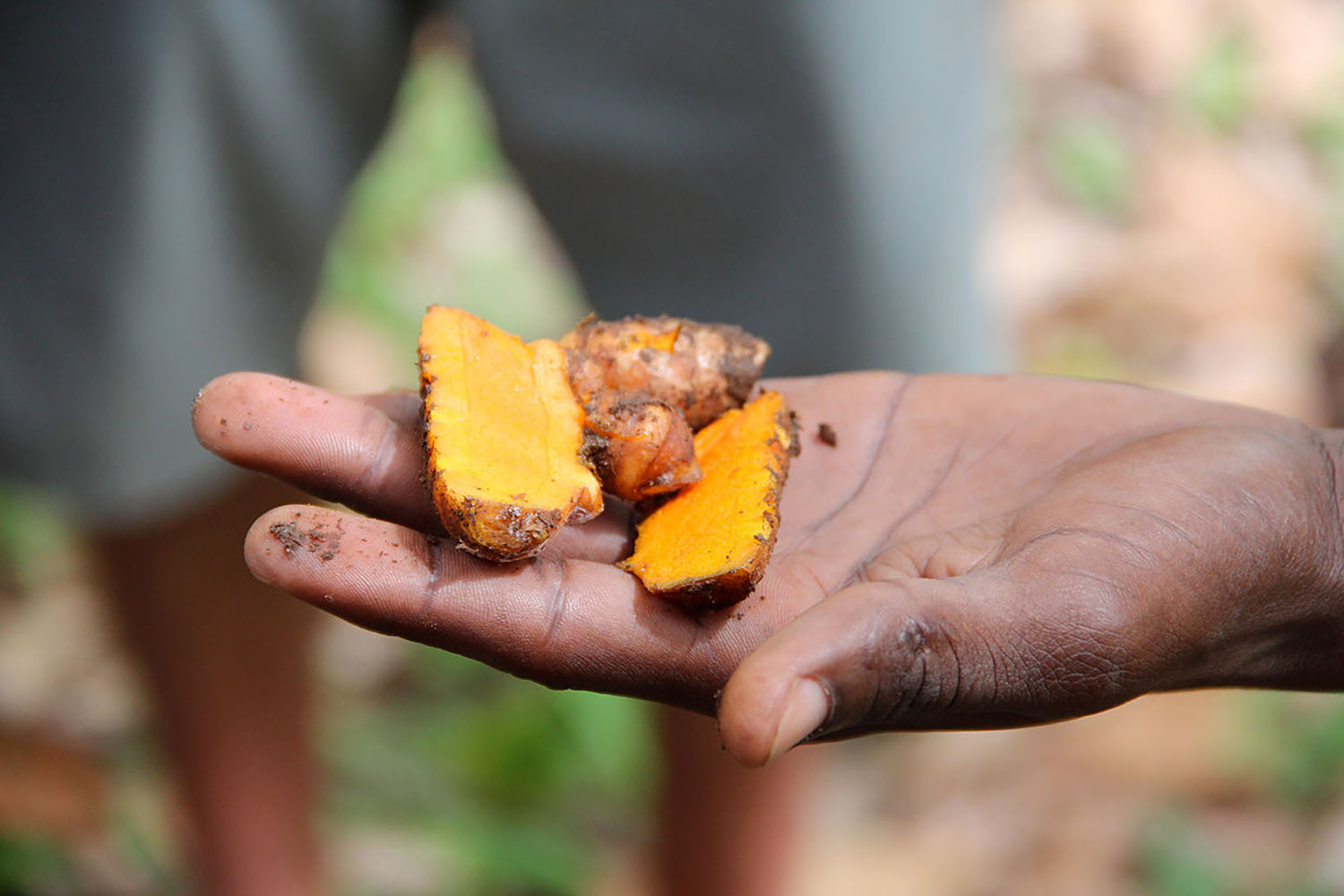ARTICLE
Turmeric Root Dye
A bright yellow natural dye derived from the turmeric plant (Curcuma longa) native to South and Southeast Asia, turmeric roots are used for dyeing, painting, home remedies and cooking. The turmeric plant, known as haldi in most Indo-Aryan languages, may have arrived in South Asia during the early historic period, either through a land route from China or the sea route from Vietnam, then cultivated through selective cross-breeding with wild varieties such as Curcuma aromatica. While India has been the main producer and consumer of turmeric for centuries, the root is also used in the cuisine and traditional medicine of China, West Asia and sub-Saharan Africa.
Firm roots are preferred while harvesting turmeric. Like all natural yellow dyes, turmeric is not durable and fades after several washes and prolonged exposure to light. Despite this, it was widely used as a dye due to its vibrancy and affordability. Cloth to be dyed is usually soaked in a solution of hot water, powdered turmeric root, baking soda and lime juice until it turns a strong shade of yellow. When dyeing calico cloth, pomegranate rind and alum are added to brighten the yellow colour and extend its life. Turmeric is also used on wool and silk, often combined with various mordants to produce different colours, such as tin mordant, potassium dichromate and ferrous sulphate to produce orange, olive green and brown, respectively. Dyed blue or red cloth is also overdyed with turmeric to obtain shades of green or orange. However, since turmeric is a fugitive dye, the yellow component of the colour eventually fades, leaving the cloth a light blue or pink.
Today, turmeric continues to be used as a spice and a natural food colourant across the world, but its use as a textile dye has dwindled considerably due to the increased availability of synthetic alternatives.
Bibliography
Our website is currently undergoing maintenance and re-design, due to which we have had to take down some of our bibliographies. While these will be re-published shortly, you can request references for specific articles by writing to hellomapacademy@map-india.org.







